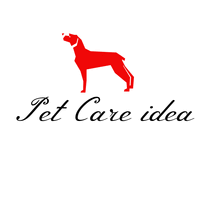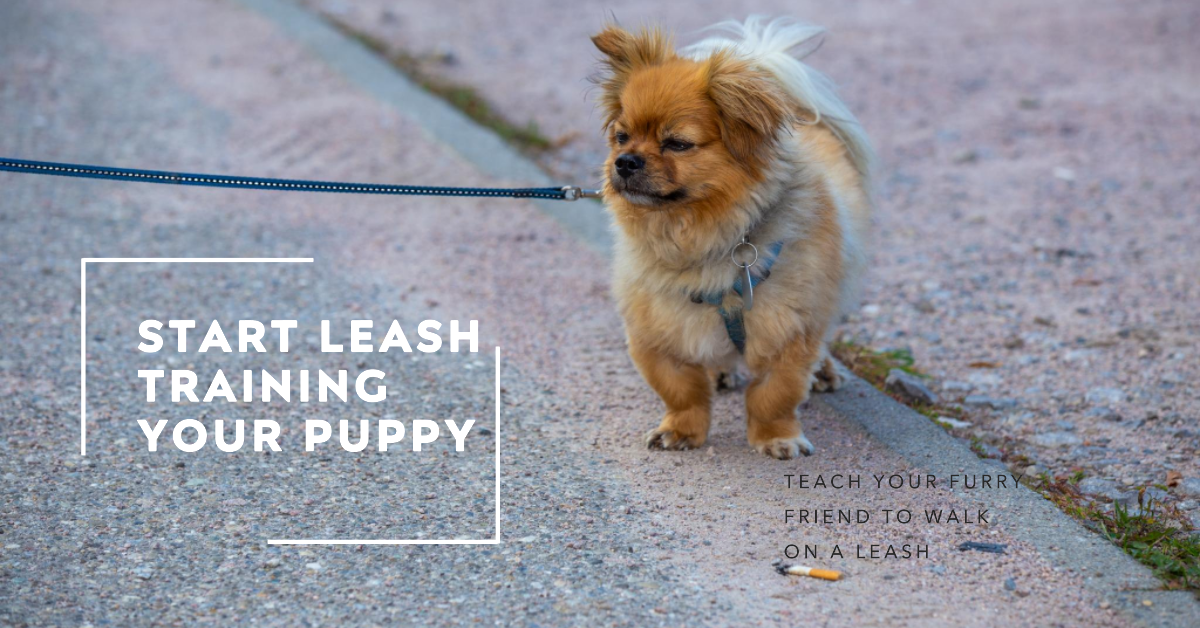So, you've brought home a new bundle of joy in the form of a furry, four-legged friend. Now comes the important question: What Age To Start Leash Training A Puppy? Leash training is an essential skill for any dog owner, as it ensures their safety and allows for enjoyable walks together. In this article, we will explore the ideal age to begin leash training and provide you with helpful tips to make the process a breeze. Get ready to set off on a pawsome adventure with your little companion!
Benefits of Leash Training
Leash training is an essential part of raising a well-behaved and obedient puppy. Not only does it promote good behavior, but it also ensures the safety of your furry friend and helps build a strong bond between you and your pup.
Develops good behavior
Leash training teaches your puppy a set of rules and boundaries that they need to follow when out for a walk. By consistently reinforcing these rules, such as walking calmly beside you and not pulling on the leash, you are instilling good behavior in your puppy. This translates into a well-behaved dog who is a pleasure to walk and interact with.
Promotes safety
Safety is a crucial aspect of leash training. When your puppy is properly leash trained, they are less likely to run off, bolt after something of interest, or get themselves in dangerous situations. Having your puppy on a leash gives you the ability to control their movements and keep them safe from potential hazards like traffic or aggressive dogs.
Builds a strong bond
Leash training offers an excellent opportunity to strengthen your bond with your puppy. Through the process of training, you establish trust and communication, creating a deeper connection between you and your furry companion. Spending quality time together during walks also allows for bonding and creates positive associations with being on a leash.
Understanding a Puppy's Development Stages
To successfully leash train your puppy, it's important to understand the different stages of their development. Each stage comes with its own unique characteristics and challenges, and knowing how to approach leash training during each stage will greatly contribute to your pup's progress.
Neonatal stage
The neonatal stage is the first two weeks of a puppy's life. At this stage, puppies are completely dependent on their mother and littermates for survival. They are not physically capable of walking on a leash or engaging in any form of training.
Transitional stage
The transitional stage occurs between two to four weeks of age. During this stage, puppies begin to open their eyes and ears, start crawling and exploring their surroundings. However, leash training is still not suitable as their motor skills are not fully developed, and their focus is primarily on bonding with their littermates.
Socialization period
The socialization period typically starts at around three weeks and lasts until about fourteen weeks of age. This is a critical stage for a puppy's mental and emotional development. It is an ideal time to introduce your puppy to the concept of a leash, gradually familiarizing them with it and making positive associations.
Juvenile period
The juvenile period starts around three to four months of age and lasts until puberty. Puppies in this stage are more coordinated and physically capable, making it a suitable time to begin leash training. However, it's important to remember that they are still young and may get easily distracted or excited, requiring patience and consistency in their training.
Adolescence period
The adolescence period typically begins around six to eighteen months of age, depending on the breed. During this stage, puppies experience hormonal changes and may become more independent and testing boundaries. Consistency in training and reinforcing leash skills established earlier is essential to ensure your puppy continues to exhibit good behavior on the leash.
What Age To Start Leash Training A Puppy


While the specific timing may vary depending on the individual puppy, there are several key factors to consider when determining the right moment to start leash training.
Early stages of puppyhood
Although actual leash training does not start until later stages, exposing your puppy to the leash and collar early on can help them become accustomed to the feeling and prevent any fear or resistance towards it. Gentle introductions to the leash during play sessions can be beneficial in the long run.
When the puppy is physically ready
Puppies need to have developed enough physical coordination and strength before being formally leash trained. This usually occurs around three to four months of age, depending on the breed and individual growth rate. It is important not to rush the process and allow your puppy to grow and mature before engaging in leash training.
When the puppy exhibits basic obedience
Before starting leash training, it's crucial for your puppy to have a foundation in basic obedience commands like “sit,” “stay,” and “come.” These commands will serve as a basis for the leash training process and help your puppy understand the expectations when attached to a leash.
When the puppy is comfortable with a collar or harness
Before attaching a leash, it's essential for your puppy to become comfortable wearing a collar or a harness. Allow your puppy to wear the collar or harness for short periods of time indoors, gradually increasing the duration. Ensure that the collar or harness fits properly and does not cause any discomfort for your pup.
Preparing for Leash Training
Proper preparation is key to successful leash training. Taking the time to gather the necessary equipment and selecting appropriate leash and collar options will contribute to a smooth training process.
Gathering the necessary equipment
Before beginning leash training, ensure that you have all the necessary equipment. This includes a leash of appropriate length, a collar or harness that fits properly, and any additional accessories like tags or reflective gear for added safety during walks.
Choosing an appropriate leash and collar
When selecting a leash and collar or harness, consider the specific needs and characteristics of your puppy. Opt for a leash that is sturdy and comfortable to hold, with a length appropriate for your puppy's size and breed. Collars or harnesses should be adjustable and secure, providing a snug fit without causing discomfort.
Introduction to the Leash
Introducing your puppy to the leash is an important step in the training process. By gradually familiarizing them with the leash and teaching them to accept it, you set the foundation for successful leash training.
Familiarizing the puppy with the leash
Start by allowing your puppy to investigate the leash in a safe and controlled environment. Allow them to sniff and explore the leash while providing praise and rewards for positive interaction. This helps create positive associations with the leash and reduces any fear or resistance.
Teaching the puppy to accept the leash
Once your puppy is comfortable with the presence of the leash, gradually introduce the act of attaching it to their collar or harness. Start by attaching the leash for short periods of time while providing treats and positive reinforcement. Increase the duration gradually, ensuring that your puppy remains calm and relaxed throughout the process.
Basic Commands to Teach Before Leash Training
Before diving into leash training, it's important for your puppy to have a solid foundation in basic obedience commands. These commands will serve as the building blocks for successful leash training.
Sit
Teaching your puppy to sit on command is an essential skill that will make leash training much easier. Start by holding a treat close to your puppy's nose and slowly move it upwards, causing their bottom to lower into a sitting position. Once they are in a sitting position, provide praise and a reward.
Stay
The “stay” command is crucial for keeping your puppy in place during walks or when encountering potential distractions. Begin by having your pup sit and then extend your hand toward them, open your palm, and say “stay.” Take a step back, and if your puppy remains in the sitting position, reward them with praise and a treat.
Come
The “come” command is crucial in ensuring your puppy returns to you when called, either during walks or in potentially dangerous situations. Start in a safe and secure environment and call your puppy's name followed by the word “come.” When they come to you, provide praise and a high-value reward. Gradually increase the distance and distractions as your puppy becomes more reliable with the command.
Leave it
The “leave it” command is essential for preventing your puppy from picking up potentially harmful objects during walks. Begin by holding a treat in your closed fist and showing it to your puppy. When they try to investigate or nibble at your hand, close your hand and say “leave it.” Once your puppy loses interest in your closed fist, provide praise and a reward.
Step-by-Step Leash Training Process
Now that you've laid the groundwork with basic obedience commands, it's time to begin the leash training process. Follow these steps to ensure a smooth transition from learning commands to walking on a leash.
Start indoors or in a secure area
Begin the training process in a familiar and controlled environment, such as indoors or a securely fenced backyard. This allows your puppy to focus on the new experience without distractions and provides a safe space for practicing leash skills.
Allow the puppy to investigate the leash
Give your puppy the opportunity to sniff and investigate the leash before attaching it to their collar or harness. This helps them develop a positive association with the leash and reduces any initial resistance or fear.
Positive reinforcement and reward-based training
As your puppy becomes comfortable wearing the leash, use positive reinforcement techniques to encourage desired behavior. Reward your puppy with treats, praise, and affection for walking calmly beside you without pulling on the leash. Consistency and patience are key during this process.
Begin practicing outdoors
Once your puppy is consistently walking beside you indoors or in a secure area, gradually transition to practicing outdoors. Start in a quiet and familiar environment, such as your backyard or a neighborhood park with little to no distractions. Gradually increase the duration and distance of the walks, always rewarding good behavior.
Walking in different environments
As your puppy becomes more comfortable with walking on a leash in familiar surroundings, gradually introduce them to different environments and distractions. This helps them generalize their leash skills and remain focused on you regardless of the distractions around them. Practice walking on different surfaces, encountering other people and animals, and navigating through various levels of activity.
Common Challenges and Troubleshooting
Leash training may come with its fair share of challenges. Here are some common issues that may arise and how to overcome them.
Pulling on the leash
If your puppy tends to pull on the leash, it's important to address this behavior early on to prevent it from becoming a habit. To discourage pulling, stop walking whenever your puppy starts to pull and wait for them to return to your side. Reward them with praise and continue walking. Consistency is key in reinforcing good leash manners.
Fear or resistance towards the leash
If your puppy shows fear or resistance towards the leash, take a step back and focus on desensitizing them to it. Begin by simply having the leash present in the environment and reward your pup for positive interactions. Gradually increase their exposure to the leash, always providing praise and rewards for calm behavior.
Getting distracted during walks
If your puppy easily gets distracted during walks, it's important to maintain their focus and engagement. Use high-value treats or toys to redirect their attention back to you whenever they become distracted. Incorporate training exercises during walks to keep their mind stimulated and focused on you.
Tips for Successful Leash Training
To ensure a successful leash training experience, keep the following tips in mind:
Be patient and consistent
Leash training takes time and patience. Stay consistent in your training methods and expectations, and remember that every puppy learns at their own pace. Celebrate small victories and remain positive throughout the process.
Keep training sessions short and positive
Puppies have short attention spans, so it's important to keep training sessions short and engaging. Aim for multiple short sessions throughout the day rather than one long session. Make the training experience positive and enjoyable for your puppy by incorporating rewards, praise, and play.
Use high-value treats as rewards
High-value treats, such as small pieces of cooked chicken or freeze-dried liver, can be incredibly effective in motivating your puppy during leash training. Use these treats sparingly but consistently to reward desired behavior and reinforce positive associations with the training process.
Gradually increase leash length and freedom
As your puppy progresses with their leash training, gradually increase the length of the leash and allow them more freedom to explore their surroundings. This helps build confidence and allows your pup to practice their leash skills in a controlled manner.
Conclusion
Leash training is a valuable skill that every puppy should acquire. It promotes good behavior, ensures their safety, and helps build a strong bond between you and your furry companion. By understanding the different stages of your puppy's development, preparing properly, and following a step-by-step training process, you can set your puppy up for success and enjoy many enjoyable walks together. Remember to be patient, consistent, and always prioritize positive reinforcement in your training approach. With time and effort, you'll have a well-behaved pup who walks confidently by your side.





